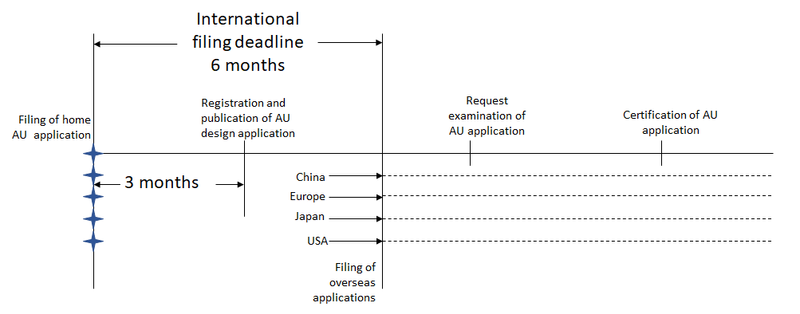The requirements for design registration and the design process made easy

What is a registered design?
A registered design is a form of intellectual property, in addition to patents, trademarks and copyright. A registered design protects the way that your design looks. The focus of protection of a registered design relates purely to the aesthetics of the design. A registered design does not protect the functionality of the product to which the design has been applied.
What are the requirements for an enforceable registered design?
In order for your design to be registered, and to be enforceable against others, it must meet the two main requirements of being:
- novel (or new), and
- distinctive.
In order to assess whether your design is novel and distinctive, it is compared against the “prior art”. The prior art is everything that has been put into the public domain anywhere in the world before the earliest filing date of your design application.
The requirement of novelty means that the prior art must not show the same design as the design that you want to protect. The requirement of distinctiveness means that, even if your design is not the same as the prior art, it must be distinctive over the prior art.
It is very important to understand that you can destroy the novelty of your own design by making a public disclosure of it, or by using it commercially, before you file your design application. If you have already done so, there may still be avenues for protection, but you will need to speak to us about these.

The registration process locally
In order to file a registered design, we would prepare a set of drawings of the product, as well as a “Statement of Newness and Distinctiveness”. We would then file a design application using these drawings and the statement. We typically require a view of the product from all six sides (top, bottom, left side, right side, front, back) as well as at least one or two perspective views.
When we file your design application, it will initially only get tested for formalities by IP Australia (i.e. whether all the correct forms have been handed in). It will then be registered and published. Publication typically takes about 3 months but can be longer. It can stay in this state, having a status of being “registered” for the rest of its 10 year lifespan. However, it is not enforceable against others in this state.
In order to be able to enforce your design against others, we will need to request for examination of your design application. When we request examination, an Examiner at IP Australia will carry out a search for prior art, and will test your design against the prior art that they find to establish whether it is new and distinctive (as set out above).
If the Examiner is satisfied that your design is both new and distinctive, they will certify your design as having been examined. Once your designs status has been updated as having been certified, it will be enforceable against others.
The registration process overseas
In order to extend your design protection overseas, you would initially start your “home” filing in Australia. You will then have six months in which to file overseas design applications that claim priority back to your home filing. The overseas countries that you file design applications in will recognise the filing date of your home filing as if you had filed in their country on that date. Your application in each country will then be examined according to that country’s design laws.
If you miss the six month deadline, it may still be possible to file design applications in some countries, although these will be the exceptions. Please speak to one of our attorneys if you are worried about this.
How does infringement work?
As mentioned above, your design application goes through a process of registration and certification before it can be enforceable against others. Remember that registered designs are territorial, and only have effect in the countries/regions in which they have been granted.
Once it has been certified, if anybody else exploits a product that looks substantially the same as your registered design, it will infringe your registered design. If their product infringes your registered design, you may have a number of remedies against them. These include:
- an injunction against them selling any more infringing products;
- the requirement for them to deliver up infringing products to you for destruction;
- the requirement for them to pay you an account of profits that they have made on the infringing product, or in lieu of this;
- the requirement for them to pay you damages that you have suffered because of their infringement.
If you think that a registered design would be an appropriate form of protection for your product, please feel free to call one of our design experts at Baxter IP.
